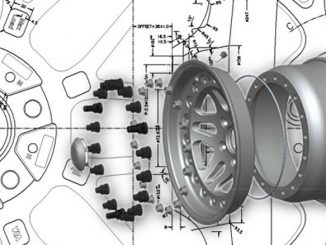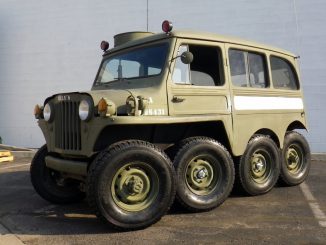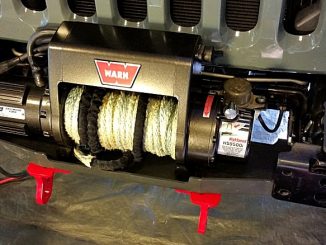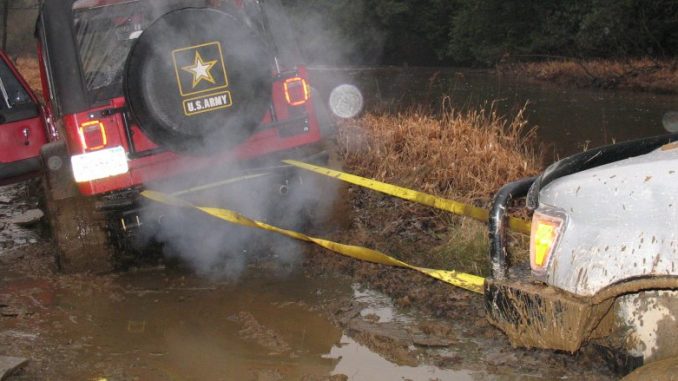
The right recovery straps and how to use them can make the difference if you can pull your vehicle out safely or if you have to wait on a tow truck. A high-quality strap without hooks attached to it is the strap you want to use for getting a vehicle unstuck.
This is NOT a recovery strap:
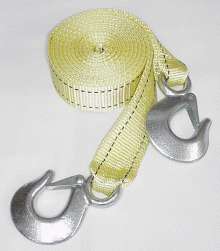
The above is called a “tow” strap. The main reason not to use this for recovery is simple. If the recovery strap or your recovery hardware breaks, it’s not safe to have a metal hook flying off at speeds in excess of 100 mph.
Many people have been killed and seriously injured by using these straps incorrectly. These straps will not stretch because they are made for towing, not recovery.
Let me first clarify what we are talking about.
Here is a recovery strap:
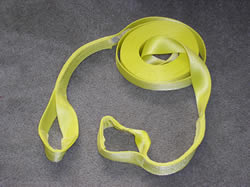
How a Recovery Strap Works
The strap works like this. Say for example you are pulling out your friend, so you attach your recovery strap to the back of your vehicle and then to the front of his. As you drive away from him the recovery strap stretches just like a rubber band. The strap wants to go back to its normal size, so it has no other choice than to transfer the energy to the stuck vehicle, pulling it out.
Recovery straps are flat with sewn loops and no hooks. They are nylon, not polypropylene or Dacron or chain. Because the straps are made of Nylon, they stretch. They are safer than chains, easier to use, and not nearly as heavy.
Specifications
I’ve seen recovery straps come in lengths of 20 to 40 feet and widths from 2 to 6 inches. A general rule of thumb, each inch of width will allow you to pull out about 10,000 lbs. So if I have a 3 inch wide strap, it would be rated to tug up to 30,000 lbs. Many will then ask, why not go all the way up to a 6″ wide recovery strap? The problem is that the strap becomes less elastic the wider it gets, which means it will not work properly. Typically a 2″ or 3″ wide recovery strap will suit all of your needs.
Tips for Recovery Strap Use
- Before ever using the strap, make sure it is in good condition ( no cuts, frays, or broken stitching.)
- Make sure the hardware being used is free of defects and rust. This includes your tow hooks or front hitch and the hardware on the other vehicle. If possible, the recovering vehicle should place the recovery strap to its rear end, which would be the safest place if the strap happens to break.
- You may be able to wrap the strap around a hitch, but I would not put it IN the hitch. I have seen a few people who have bent the pin, which then had to be cut out. Getting a tow hook or D-Ring adaptor to go into the hitch is a better idea. Here is an example of a D-Ring adaptor and how a recovery strap should be hooked up to one:
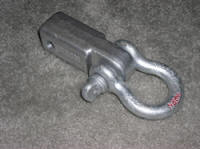
- Some older cars actually have tow hooks, but if not you must use your own judgment. Never attach a recovery strap to a vehicles bumpers, axles, suspension, steering rods, or a trailer hitch ball. The attach points must be to a secure place on the vehicles frame. Do not place the recovery strap on another vehicle in a way that it may be cut.
- Never, ever, attach a recovery strap to another vehicle with a knot. You should pass one end of the strap through the loop at the other end of the strap to secure it on.
- Incase the strap may break, lay a tarp or some jackets on top of the recovery strap. When the strap breaks (lets hope for the best, but prepare for the worst), the jackets or tarp will slow the recovery strap down before it hits someone.
- To help protect the strap from tears, make sure all logs and large rocks are removed from the recovery path. Everyone should stand clear of the recovery strap when it is in use.
- When pulling the vehicle out, drive very slowly. Sudden tugs may lead to damage to either of the vehicles or the strap.
- Once the vehicle is safely removed, inspect your recovery strap and hardware and hit the road!
In addition to these recommendations, read the instructions your recovery strap comes with. To protect your strap, store it out of sunlight and away from heat and keep it clean. Dirt, mud, and debris embedded in a tow strap actually damages the fibers over time and can decrease its strength. After a muddy day of wheeling and recovery, always clean your straps by hosing them off and spray horizontally across the strap as not to push the debris into the strap fibers. Happy Recovering!
Article written by Robert B., provided from Visit them on the web at www.gator4x4.com |  |

